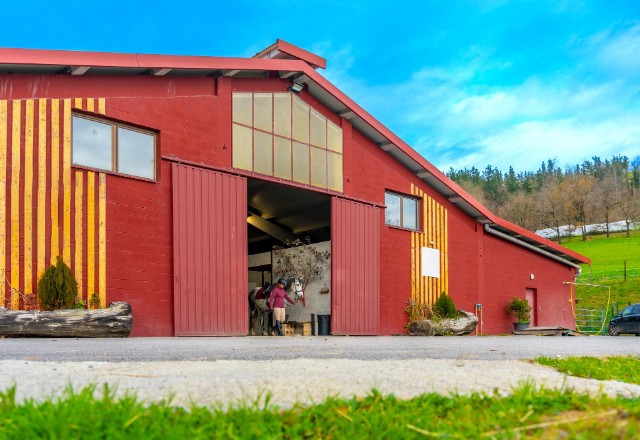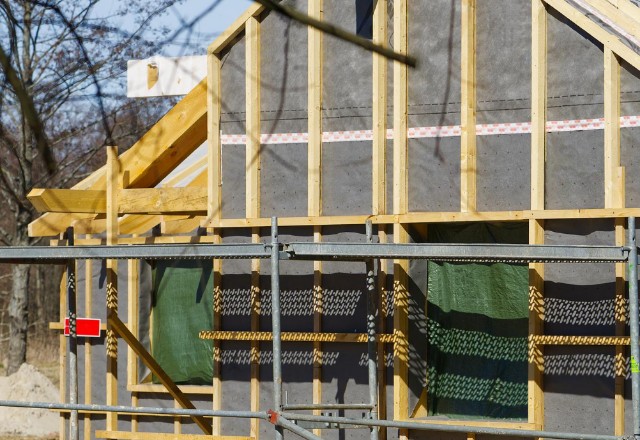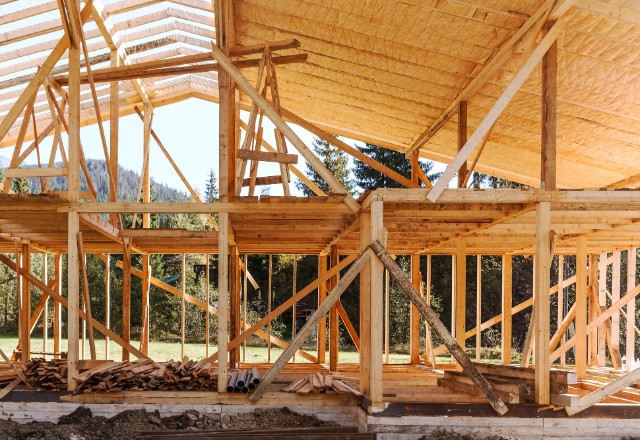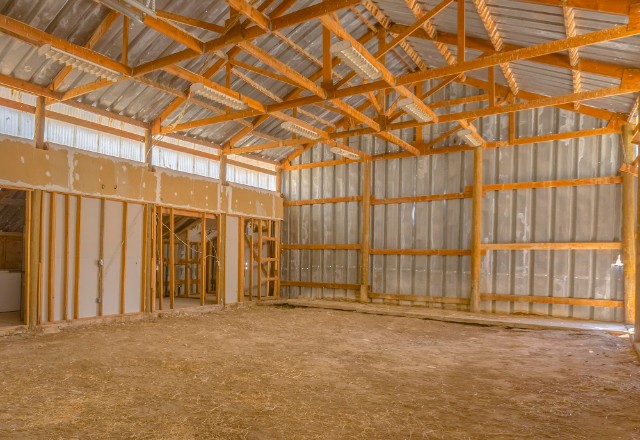Did you know that up to 25% of a building’s energy can escape through an uninsulated roof? Enter pole barn insulation blankets – the unsung heroes of energy conservation. These innovative solutions not only slash utility bills but also create a cozy environment year-round. By trapping heat in winter and repelling it during scorching summers, these blankets offer unparalleled comfort while being easy on the pocket. Say goodbye to extreme temperatures inside your barn and hello to savings with pole barn insulation blankets.

Understanding Pole Barn Insulation Blanket
Types of Insulation Blankets
Pole barn insulation blankets come in various types, such as fiberglass made from glass fibers and mineral wool derived from rocks or slag. Plastic fibers, cotton, and sheep’s wool are also used for insulation. Fiberglass offers affordability while mineral wool provides excellent fire resistance.
Insulation facings play a crucial role in pole barn insulation blankets. Reinforced facings enhance durability, vapor barriers prevent moisture infiltration, and radiant barriers reflect heat away from the building structure. These features work together to ensure optimal insulation performance.
Key Features
When selecting a pole barn insulation blanket, consider key features like thermal resistance, which measures how well the material resists heat flow. Fire resistance is another essential aspect to evaluate since some materials offer better protection against fires than others do. It’s important to think about the environmental impact of the chosen insulation material regarding sustainability and recyclability.

Importance of Proper Insulation
Preventing Condensation
Proper insulation like a pole barn insulation blanket helps reduce condensation by allowing ventilation. Ventilation prevents moisture buildup, and vapor barriers are essential to stop moisture from entering the insulation. Without proper ventilation and vapor barriers, condensation can damage the building structure.
Moisture control is crucial in preventing condensation issues. Vapor retarders restrict moisture movement through the insulation, reducing the risk of condensation forming within the building structure. Installing these vapor control layers correctly is key to ensuring they effectively prevent excess moisture buildup inside your pole barn.
Vapor Control
Choosing an insulation material resistant to mold growth is vital because excessive moisture can lead to mold infestations. Mold not only damages structures but also poses health risks. Besides selecting mold-resistant materials, sealing any gaps or cracks in your building envelope prevents air leakage that could introduce more moisture into your pole barn’s interior.
Need A Reliable Contractor To Install Insulation Blanket On Your Barn?
Call us 509-201-4190 or send the form
Benefits of Blanket Insulation for pole barns
They offer various advantages that make them a popular choice for insulating these structures. One key benefit is heat transfer control. By slowing down heat transfer, blanket insulation helps maintain a stable interior temperature. The effectiveness of the insulation in resisting heat flow is measured by its R-value; the higher the R-value, the better its heat resistance.
Sound dampening is another advantage of using blanket insulation in pole barns. It can help reduce noise transmission between rooms or from external sources. Selecting an insulation material with good sound absorption properties enhances this effect, ensuring optimal results in minimizing noise pollution within the building.
Furthermore, when considering pole barn insulation blankets, pest prevention is a crucial aspect to keep in mind. Certain types of insulation materials come with pest-resistant properties that deter rodents and insects from nesting inside the structure. Properly sealing openings and gaps along with utilizing pest-resistant materials can significantly contribute to preventing unwanted pests from entering the pole barn.
Different Insulation Products
Silvercote Single-faced
Silvercote single-faced insulation is known for its excellent thermal performance. It comes with a reinforced facing that enhances its strength and durability. This type of insulation is ideal for maintaining consistent temperatures in pole barns.
Excellent thermal performance
Reinforced facing for added strength and durability
Pro-Therm Condensation Blanket
Pro-Therm condensation blanket is specifically designed to prevent condensation in metal buildings. Equipped with a vapor barrier, it effectively controls moisture levels within the structure, reducing the risk of corrosion over time.
Prevents condensation in metal buildings
Vapor barrier to control moisture and reduce corrosion risk
Prodex Total Insulation
Prodex Total insulation stands out due to its unique combination of reflective and foam insulation materials. By offering both thermal and radiant heat control, this insulation product ensures optimal energy efficiency within pole barns.
Combination of reflective and foam insulation
Provides thermal and radiant heat control for energy efficiency

Effective Insulation Strategies
Wall Insulation
When insulating walls, pole barn insulation blankets are a popular choice. They provide excellent thermal performance while being cost-effective and easily accessible. Fiberglass insulation is commonly used in pole barns for its affordability and good thermal properties. However, it’s essential to handle fiberglass carefully as it can irritate the skin and lungs if not managed properly.
One drawback of fiberglass insulation is that it may settle over time, reducing its effectiveness in insulating the walls of a pole barn. Despite this issue, when installed correctly and maintained appropriately, pole barn insulation blankets with fiberglass can significantly improve energy efficiency within the structure.
Ceiling Insulation
Ceiling insulation plays a crucial role in maintaining consistent temperatures inside a pole barn. Using insulation blankets specifically designed for ceilings helps regulate heat flow and minimize energy loss through the roof. When considering ceiling insulation options for a pole barn, choosing materials like fiberglass can be beneficial due to their affordability and availability.

Hybrid Systems and Advantages
Hybrid Insulation Benefits
Hybrid systems, like pole barn insulation blankets, offer unique advantages. By combining different insulation types, they deliver superior performance tailored to specific needs and budgets. For instance, blending fiberglass for cost-effectiveness with foam boards for enhanced thermal resistance creates a customized solution.
Customized hybrid insulation solutions ensure year-round temperature control in pole barns. Properly insulated structures maintain comfortable temperatures irrespective of external conditions. During summer, the insulation helps keep the interior cool by reducing heat transfer through walls and roofs. In winter, it retains warmth within the building by minimizing heat loss.
Simplifying Installation Process
Installation Steps
Installing a pole barn insulation blanket involves simple steps. Firstly, measure and cut the insulation material to fit the areas you want to insulate. This ensures a snug fit for maximum efficiency. Once cut, secure the insulation in place using appropriate fasteners or adhesives. This step keeps the insulation from shifting around.
Managing Blanket Insulation Installation Challenges
When installing pole barn insulation blankets, it’s crucial to address any irregularities in the building structure beforehand. Fixing these issues ensures a smooth installation process and optimal performance of the insulation. Dealing with hard-to-reach areas or obstacles during installation can be challenging but not impossible. Using specialized tools or seeking professional help can simplify this task.

Factors for Choosing Blanket Insulation
R-Value Importance
R-value is crucial when selecting pole barn insulation blankets. It indicates the material’s ability to resist heat flow. Higher R-values offer better insulation, keeping the building warm in winter and cool in summer.
Consider using insulation blankets with a higher R-value if you live in colder climates. For example, an area with harsh winters will benefit from insulation with an R-value of 30 or more.
Material Durability
The durability of the insulation blanket material impacts its longevity and effectiveness. Opt for materials like fiberglass that is resistant to moisture and mold growth. Fiberglass is also a cost-effective option.
Other factors
Installation process and ease of handling
Compatibility with pole barn construction materials
Longevity and durability of the insulation material
Cost-effectiveness in terms of energy savings
Closing Thoughts
Now that you understand the ins and outs of pole barn insulation blankets, you know how crucial it is to have proper insulation in place. With the myriad of benefits they offer, from energy efficiency to cost savings, blanket insulation for pole barns is a game-changer. By exploring different insulation products and effective strategies, you can optimize your barn’s thermal performance and create a comfortable environment year-round. Consider hybrid systems for added advantages and simplify the installation process by following the factors outlined for choosing the right blanket insulation.
Make sure to assess your specific needs and take action to insulate your pole barn effectively. Your choice today can lead to long-term benefits in terms of energy efficiency, comfort, and cost savings. Don’t hesitate to invest in quality insulation – your barn and wallet will thank you in the long run.




 509-201-4190
509-201-4190
